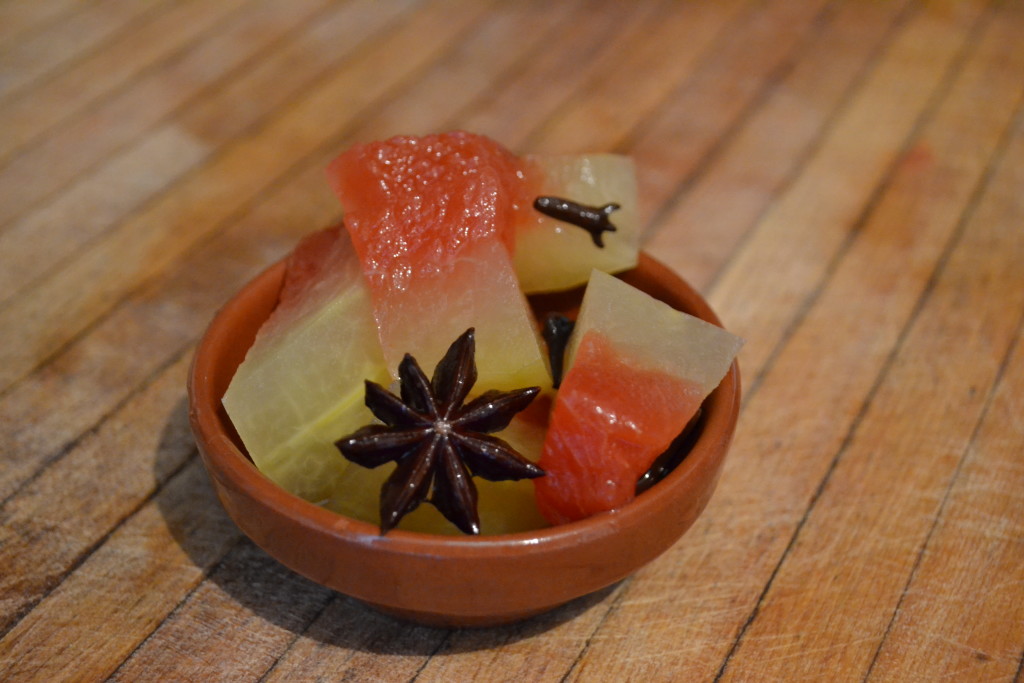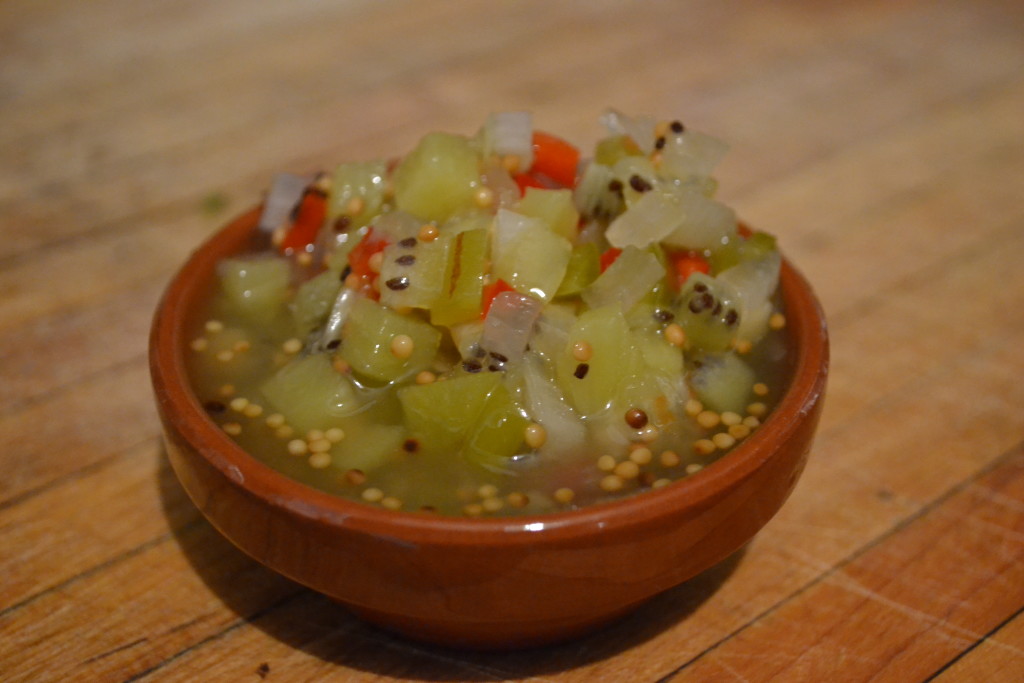On Sunday supplement
Food and Wine
Like many people in the food business I’m often asked what my favourite “X” is, be it a restaurant, a wine, an ingredient, or, pretty much anything, like, say, a “green vegetable”. My response to the last is simple. A good pickle. Closely followed by an olive. I realize that in and of themselves they’re not a green vegetable in natural state, but sometimes a bit of tweaking is needed to bring out the best in even something that Mother Nature provides.
When it comes down to it, I love pickled and brined sorts of things, be they corned beef or cucumbers or, something entirely different. But I’ll bet you didn’t know there’s a whole science behind it. Pickling, brining, corning, are all names for a process that involves preserving food through anaerobic fermentation in brine (i.e., salt dissolved in liquid) to produce lactic acid and/or marinating it in an acidic solution – most often vinegar, though that’s not a prerequisite. The result is some form of pickle with a salty and sour taste.
One particularly important aspect of the process is that the resulting pickle has an acidity level that drops below a pH of 4.6 – not to get too scientific or anything – but what makes that important is that it’s a sufficiently low pH to kill off pretty much any bacteria that are harmful to us human folk.
Rather than give you a recipe for some classic dill, half-sour, garlic-dill, or bread & butter pickle, much as many of us miss those, I thought I’d slip in a couple of favourites that we keep around the house, particularly during the summer as they make great accompaniments to many of the foods we eat during the hot months. And, they’re both really easy to make.
Watermelon Rind Pickle
Rind from half a large watermelon
4 cups sugar
2 cups white vinegar
1 tablespoon each of fennel seed, star anise, szechuan peppercorns
1 teaspoon cloves
2-3 whole cinnamon sticks
2 tablespoons coarse salt
This is a great way to use the leftover rind of a watermelon. Basically scoop out the pink flesh almost down to the rind. Peel the outer layer of skin off the rind. Cut in cubes roughly 1½-2 cm. In a pot that’s large enough to accommodate all the cubes of rind, bring the other ingredients to a boil, stirring occasionally to dissolve all the sugar. Turn off the heat, load in the cubes of rind which should be pretty much level with the liquid – mix well, cover, and leave for 10-12 hours.
Bring the whole potful back up to a boil over high heat, cover again and leave for another 10-12 hours. Repeat once or twice more until the pickles are soft with just a little crunch left – basically this is a two day process. When cooled after the last boiling ladle them into containers and store in the refrigerator. Watermelon rind pickles pair brilliantly well with grilled meats. Try them as something different from the usual accompaniments of salsa criolla and chimichurri.
Kiwi Relish
4 kiwis
1 onion
1 small green bell pepper
1 small red bell pepper
100 grams salt
225 grams sugar
160 ml vinegar
1 teaspoon celery seed
1 teaspoon mustard seed
Peel and dice the kiwis into a very small dice, about ½ cm. Dice the onion and peppers the same size. Place all the ingredients in a pot, bring to a boil, turn off the heat, cover, and leave for 6-8 hours before using. Makes a fantastic pairing with fish (amazing with salmon) and chicken – again, right off the grill during the summer is one of our favourites. Also can be used in place of a traditional pickle relish on sandwiches, hot dogs, hamburgers… you name it.
A series of recipes and articles that I started writing for the Buenos Aires Herald Sunday supplement, Food & Wine section, at the beginning of 2012. My original proposal to them was to take local favorite dishes and classics and lighten them up for modern day sensibilities. We’re not talking spa or diet recipes, but at the very least, making them healthier in content, particularly salt, fat and portion size. As time went by, that morphed into a recipe column that, while emphasizing food that is relatively “good for you”, wasn’t necessarily focused on local cuisine. At the beginning of 2013 I decided to stop writing for them over some administrative issues, but it was fun while it lasted.

